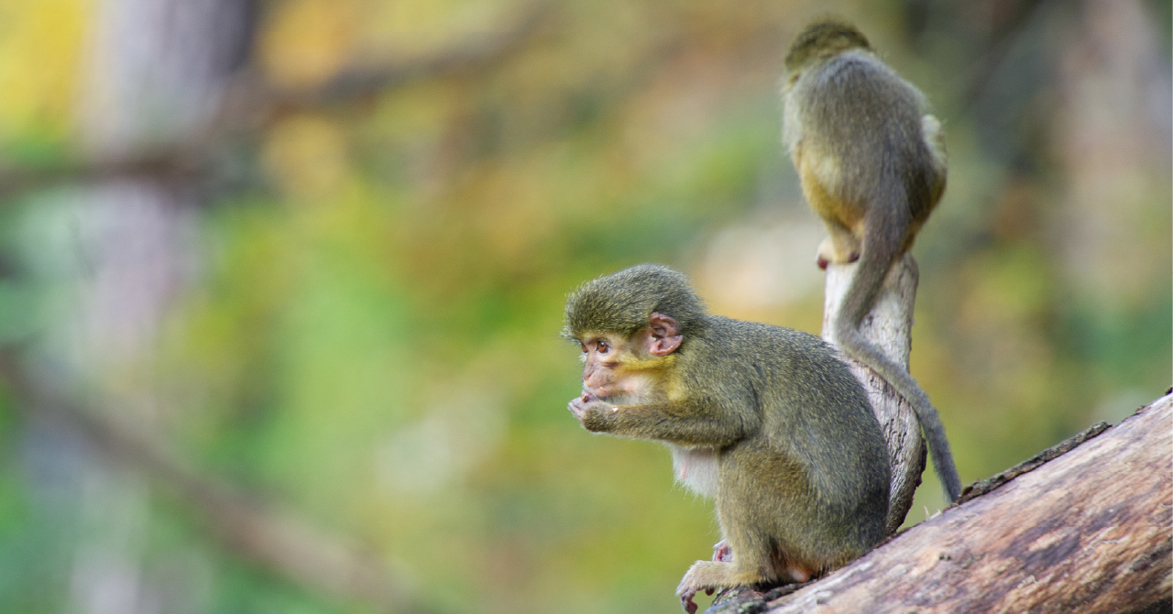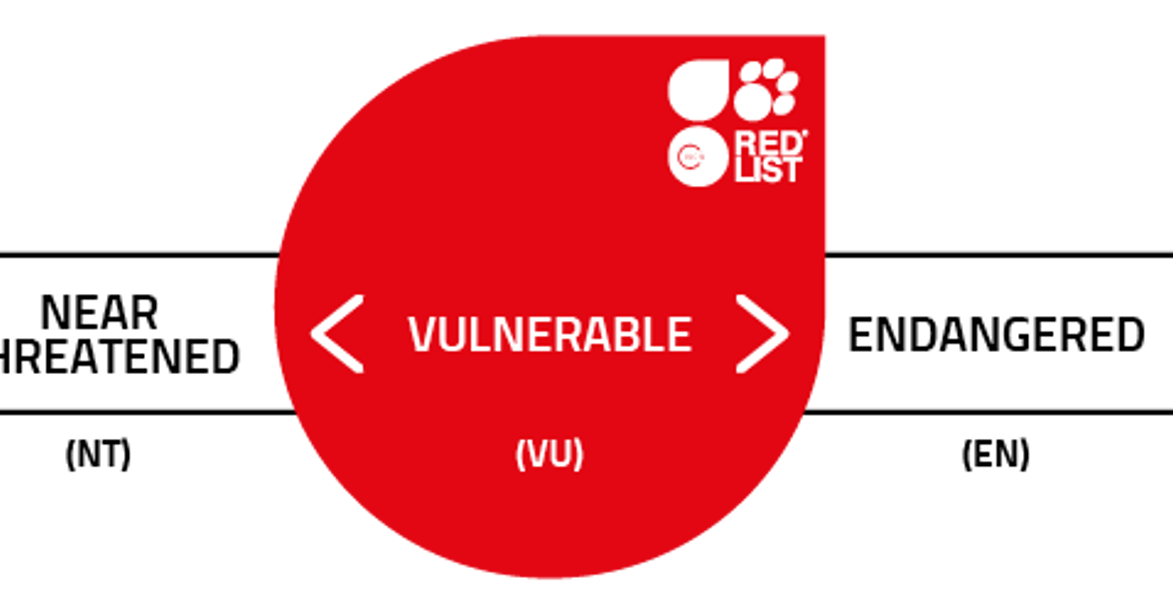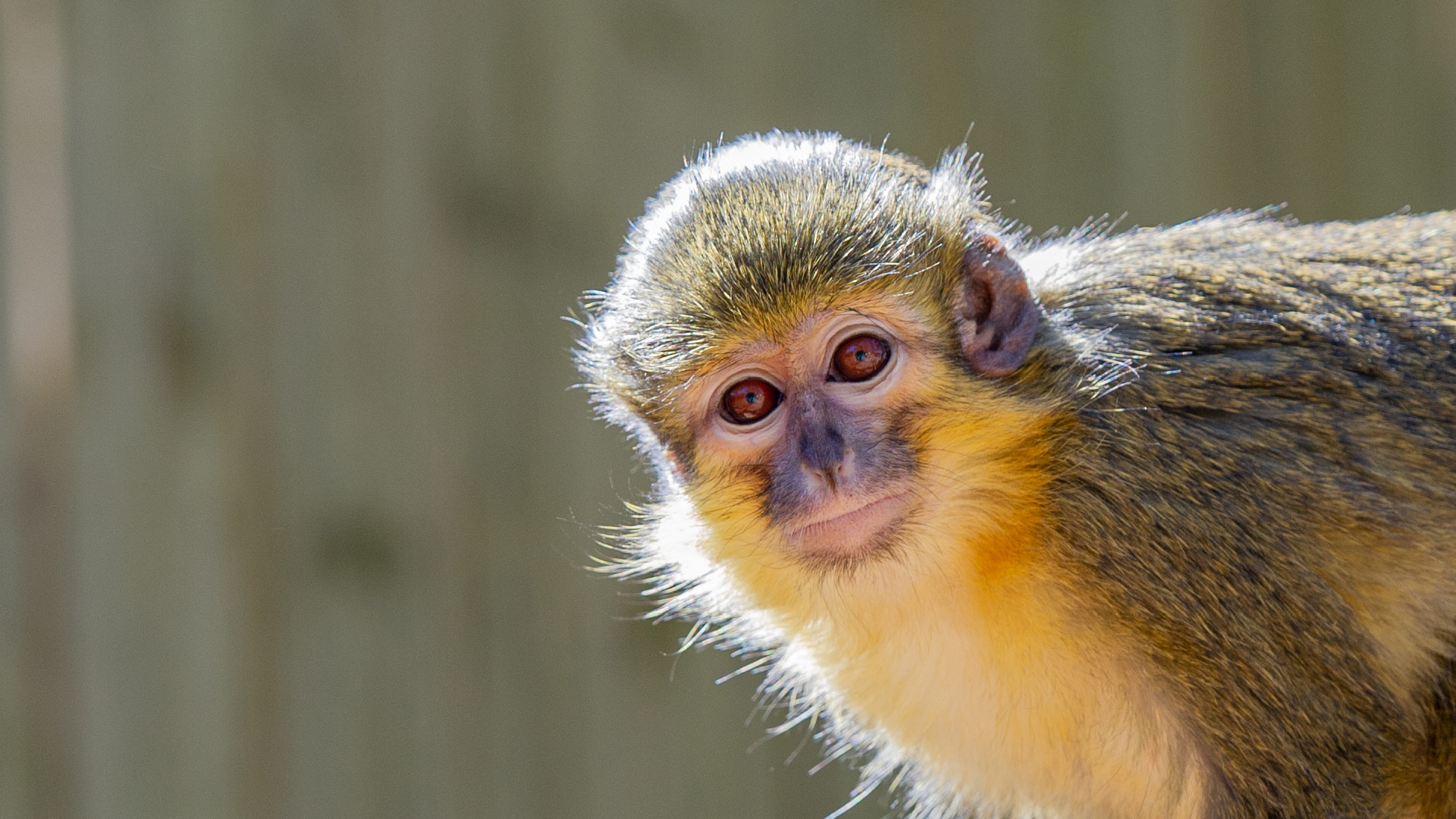Northern talapoin
Miopithecus ogouensis
Habitat
Lowland forests, swamps and mangrove forests
Food
Fruit, seeds and insects
Weight
1 - 1,5 kg
Age
± 25 years
IUCN Status
Gevoelig
Appearance
Northern talapoins are the smallest primates in Africa. They weigh between 1 and 1.5 kilos. The talapoins’ head is slightly bigger than the rest of their body. This gives them a slightly ‘babylike’ appearance. In addition, they have a characteristic yellow beard and a small, grey nose. Their belly is white and their fur is a mixture of yellow, grey and green.
Habitat
In the wild, northern talapoins live in the forests of Africa. More specifically, in Gabon, Cameroon, north-west Angola and in a small part of the Democratic Republic of Congo. They always stay close to rivers or lakes near the forests.
Lifestyle
In the wild, talapoins live in large groups of 60 and up to even 100 primates. Such groups consist of several adult males and often numerous adult females with their offspring. There are a few dominant males in the group. They determine where the talapoins go during the day. At night, the males guard the group. The women and their offspring will sleep together in the middle of the group. Talapoins often sleep close to water, sometimes even on nearby branches so they can easily escape through the water in case of danger. That is because these primates are excellent swimmers!
Behaviour
Talapoins are extremely energetic and are active during the daytime. The juveniles play a lot together, but the adult males also enjoy playful tussling too. Talapoins also spend much of the day foraging. They love eating fruit, seeds and insects. Of course, communicating well is important in such a large group. Talapoins do this, for example, by grooming each other. This is how they maintain family relationships and friendships.

Reproduction
When the females reach the age of three to four, they are ready to have children. This usually happens once a year. A female is usually pregnant for about 5.5 months and then has one child. Males know when a female is fertile because the female’s behind swells up.
Situation in the wild
Northern talapoin populations are near threatened. Although this species tolerates a wide variety of habitat changes, their numbers are still declining. This is because small mammal species, including talapoins, are increasingly being hunted by humans. These animals are mainly being hunted because the population of bigger species, that were hunted previously, has declined. Another threat to the Northern talapoin is the disappearance of their habitat. In densely populated areas, their habitat is being cleared to make way for agriculture.

At Apenheul
You’re able to spot the Northern talapoins in newest area at Apenheul! Here they share their habitat with the king colobus monkeys and the African spurred tortoises.
Population management programme
Apenheul is part of the European endangered species programme (EEP) for northern talapoins. By working together with international zoos, we ensure that a healthy population of northern talapoins is maintained in captivity.
Fun facts
- Talapoins are excellent swimmers. If they are hungry and ransack a beehive hanging over water, they jump in the water afterwards to avoid being stung by the bees. Smart!
- Talapoins are very small primates. Males weigh about 1.4 kilos and the females 1.1 kilos.
- Talapoins are not endangered in the wild, but they are a rarity in zoos. Apenheul is the only zoo in the Netherlands where you can see these primates!
- Talapoins are also known as ‘African squirrel monkeys’ because they are about the same size as squirrel monkeys. Their group structure is similar, too.
Want to see the Talapoins at Apenheul?
Get your tickets now and roam freely among the primates!

Welcome to Apenheul
Open every day
Park open from Monday 28 April, 10.00 hour